Energy Crisis: How much does your studio cost to power?
With the price of energy going nuts, it might be a good time to get a grip on how much your studio, synths and other gear are costing you to power on.
Power on
Even with government intervention, the cost of electricity is over twice what it was this time last year. With many other costs rising, it might be wise to have a better handle on what your studio is costing you. It means that you can make more informed decisions about what you turn on and what you turn off.
Now, measuring studio power usage is like measuring a piece of string. It all depends on how long your string is. So, I can’t really give you any blanket statements on how much a typical studio would cost to run. To start with, what on earth is a “typical studio”? What I can do is measure my usage, give examples and show the data I gathered so that you can either do the same or extrapolate the costs to apply to your situation.
Units
What we are trying to find out is how many units of electricity our gear is using. One unit of electricity is measured as 1kWh or one-kilowatt hour. In the UK, with the current government cap, that equates to 34p per unit. In order to find out how much our gear is costing, we need to find out how many watts it will consume per hour.
To work that out, we can either measure it with a device like a Smart Meter, or we can use that dim distant equation from school:
P=IV or, Power (watts) = Current (amps) x Voltage (Volts).
So, if you know how many amps your synthesizer is pulling, then you can multiply that by the voltage to get the power in Watts.
Here’s an example. The ModularGrid.net website has a facility where you can mock up your modular synthesizer, and it will give you the power usage based on the published specs of the modules. This isn’t always accurate because the data isn’t always included, but it’s good enough for this example.
So, with this modest 2-row case, ModularGrid tells me that it uses 1252mA at +12v and 574mA at -12V. The polarity is not important, and so we ultimately have 1252+574 which equals 1826mA or 1.826 Amps. The voltage is 12v and so the power will be:
1.826 x 12 = 21.912 Watts.
That’s not a lot.
To convert this into a cash equivalent, all we need to do is turn it into kilowatts and multiply it by the cost. So, let’s call it 22w which is 0.022kw and multiply it by 34 to get the cost in pennies:
0.022 x 34 = 0.748p per hour
That sounds very affordable, so it doesn’t look like I’ll be selling my Eurorack to save on energy costs. But this is only a small part of a studio; what about all the other gear?
Taking measurements with a Smart Plug
Digging out the published specs to find the amp usage on your gear is one way to do it. But it’s probably more efficient and more accurate to take measurements of your gear as it’s working in your situation. A great way to do this is via an energy-metering Smart Plug. These come in all shapes and sizes, some with built-in displays and others that you access via an app. I got a pack of four OnePlug Smart Plugs off Amazon for about 20 quid.
The beauty of the Smart Plug is not only that you can connect a whole bunch of stuff through it and measure the energy being used, but you can also turn them off remotely. I often find that my plug sockets are inaccessible under desks or behind other gear. This means that a lot of stuff stays on or on standby because I can’t reach the power switch. With everything connected to a Smart Plug, I can turn the whole lot off with the tap of an app. That’s pretty cool.
So, for my studio environment, I split my gear into four sections, one for each plug.
Modular section with recording and video production:
- 2x 6U Arturia RackBrutes filled with modules
- 208 HP case with modules
- 2x LED panel lights
- 2x DSLR cameras
- 1x Zoom H4 recorder
- 1x Akai Reel-to-Reel
DIY section:
- Soldering iron
- Erica Synths EDU modular
- Cre8Audio Nifty Case
- Arturia Keystep 37
- Surface Pro Audio
- Surface Go
Computer section:
- i9 9900K based PC
- Dell 28″ screen
- 2x Yamaha MS5 monitor speakers
- Arturia Audiofuse audio interface
- Komplete MIDI controller
Synth section:
- Modal Cobalt8
- Korg Modwave
- Behringer MS-101
- ASM Hydrasynth Explorer

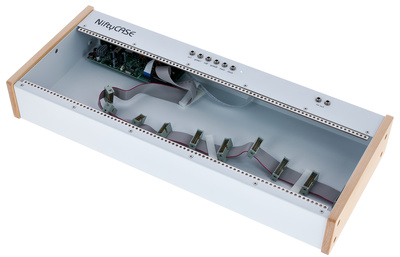

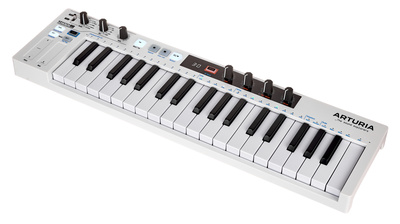

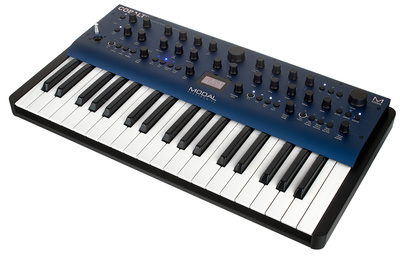
So, assuming each section runs for an hour, let’s have a look at the numbers according to the Smart Plugs.
- Modular: 165w = 5.67p per hour.
- DIY: 104w = 3.5p per hour.
- Computer idle: 130w = 4.42p per hour.
- Computer rendering video: 240w = 8.17p per hour.
- Computer running DAW at 85% CPU: 181w = 6.18p per hour.
- Synth: 14w = 0.476p per hour.
If I was to take the worst-case scenario, with everything running at once, so rendering video while recording my modular, sequencing synths and a bit of soldering on the side, I am consuming 523 watts which equates to 17.782 pence an hour. If I extrapolate that out to an 8-hour day, 5 days a week, 50 weeks of the year, I come to a grand total of £355.64. EON has estimated my household bill (I’m on 100% electric) to be £3,800 with the cap.
It’s interesting to see that my studio, even when running flat out all year round, doesn’t take 10% of my power usage. In reality, it will be much less because I am never that busy. Your results will of course, vary depending on the nature and amount of gear you have.
How can we make savings?
With my Smart Plugs installed, I can now feel good about turning everything off when I leave. But it’s not going to make a massive difference to the bill; some but not a lot. So, where do the problems lie? My studio is in an outhouse and not connected to the central heating. I have a little oil radiator that I turn on to keep me warm in the winter. Let’s put that through a plug.
The heater pulls a whopping 10 amps, eating up 2.3kW, which equates to a painful 78.2p per hour. That’s the problem right there. If I only use it in the winter months, it will double my studio’s energy consumption.
If I have a look at an overview of my power usage on an average day, it will look something like this.
The blue is drawing power from the grid, the yellow is power generation from our small solar array. You can see the spikes at 7am, 12pm and around 4pm which is when I put the kettle on and had a cup of tea. The 8am spike is probably the dishwasher going on after breakfast and the washing machine. Around 5pm is when I cooked dinner, and after that, the dishwasher probably went on again.
During the day, my studio usage is completely covered by the solar and barely registers. In the evening the result of having kids on computers, television, lights and other devices takes a big chunk of power. But on the whole, the big culprits are the essentials; the cooking and cleaning and this is September so we haven’t even got into the heating yet.
Batteries
One thing the overview makes clear is that we would benefit from solar batteries. When the panels were installed about 6 years ago batteries were not a viable option. They are now. If we could store the yellow during the day and use it in the evening, it could radically change our use of energy. However, I’ve been quoted £5-£7k to install a battery system, and over the course of a year, our solar generation only really covers a quarter of what we use. So it’s not going to make us self-sufficient, but a quarter off your bill is awesome. It’s just that it would take 5 years to make it pay for itself.
Conclusions
The good news is that your studio gear probably isn’t taking up as much energy as you think. You can minimise its impact by using Smart Plugs and getting pedantic about turning everything off. The bad news is that in order to make proper savings, you’re going to have to eat cold food, out of the can, in the dark, with a jumper on.
Solar and batteries are great but be aware that you’d need a huge array to properly supply your whole house all year round. Our 9-panel system produces 2000 units a year. An up-to-date system could provide double that in the same space, but that’s still under half of what an average 100% electric house would use. If your heating and water is taken care of by gas or oil then the solar could do a better job of supplying all your electrical needs. But fossil fuels have their own costs and challenges.
My advice is to get good information so that you can make informed decisions and get into a mindset of saving energy. The Smart Plugs have been brilliant and can be use all over the house to turn things off and measure usage. I use an OpenEnergyMonitor system to monitor my feed from the grid and solar generation. It’s far better than a regular Smart Meter as it logs all the readings and gives you local access without going through your supplier or a third party.
Or you can turn everything off and pick up an acoustic instrument.
You are currently viewing a placeholder content from YouTube. To access the actual content, click the button below. Please note that doing so will share data with third-party providers.
7 responses to “Energy Crisis: How much does your studio cost to power?”
 3,9 / 5,0 |
3,9 / 5,0 | 


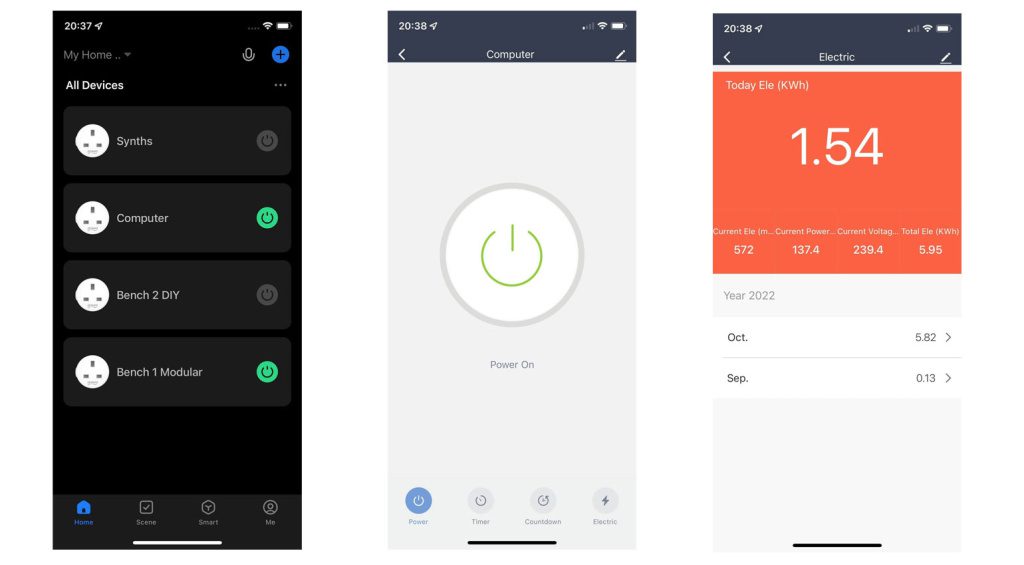

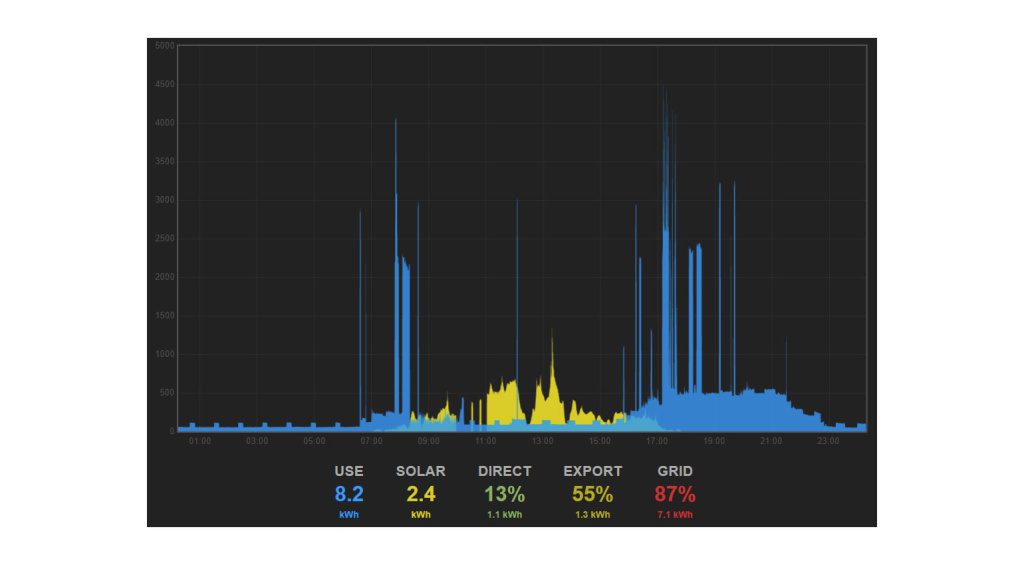


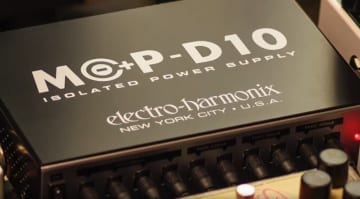

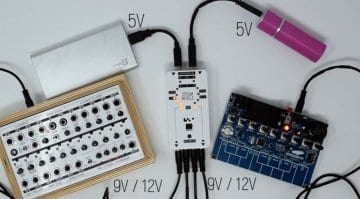
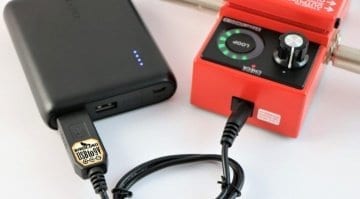
Thanks for this Robin.
I found this really informative and interesting.
I’ve been thinking about this myself and even though I do turn everything off at the plug it is sometimes nice to leave certain things on.
Some of my older amps can take 30mins or so to “warm up” and sound nice.
From what I gather, the biggest savers may come from improved insulation, weather stripping, and high efficiency windows. The biggest costs, like you mention, are heating the space, and heating water Unless you have some sort of heavy industrial process going on in your synth shed, that is. (light soldering doesn’t clear the bar)
It seems that a lot of energy is being wasted in converting mains 220 volts down to say 12 volts. Why not take the mains inverters out of the loop and have solar panels cherging a couple of car batteries andf then power all your synths from the car batteries. Free energy?
Sounds messy. I wouldn’t be able to power what the shed needs to do in terms of computer and lights and heating etc. It’s not really the synths that are eating all the power.
LED lights can run on 12 volts and your comuters can be powered by 12 volt to mains converters used by cars so you can still have free mains from the utiltiy batteries. It would be like converting the sheds power to that of a RV vehicle.
Rule of thumb for electrical gear… the warmer it gets the more it’s using.
Thanks for mentioning OpenEnergyMonitor… looks like a good idea! Without that, I tried overnight meter readings to estimate my house base load… stuff that is on all the time. Reducing that would be good!
I have thought about batteries for a solar system… I think perhaps in Summer you would fill it up, but not use it all in the evening. And in Winter you could not fill it up. But, every household has different usage.
Just a quick comment to anyone thinking about installing a ‘BESS’ (Battery Energy Storage System). Good idea, yes – but don’t be tempted into getting a low cost ‘diy’ system. Get one from a reputable, certified supplier, who knows what ‘thermal runaway’ is and (importantly) knows how the system they sell, prevents thermal runaway! You do not want Li-Ion batteries to have a thermal runaway event anywhere near your home 😱 💥And if they propose to install one in the cupboard under your stairs, forget!! (Sorry to be a bore on this topic !)
You are currently viewing a placeholder content from Facebook. To access the actual content, click the button below. Please note that doing so will share data with third-party providers.
More InformationYou are currently viewing a placeholder content from Instagram. To access the actual content, click the button below. Please note that doing so will share data with third-party providers.
More InformationYou are currently viewing a placeholder content from X. To access the actual content, click the button below. Please note that doing so will share data with third-party providers.
More Information